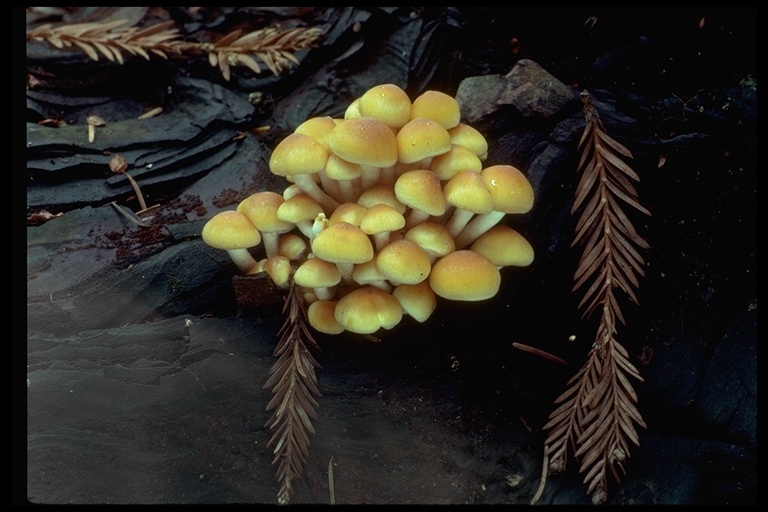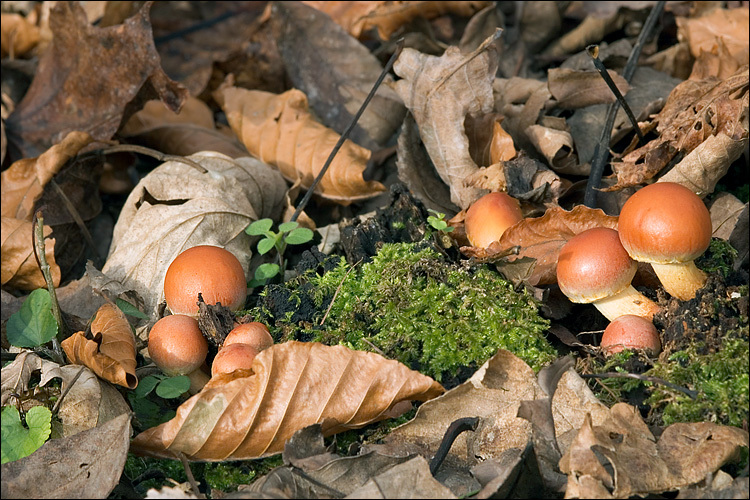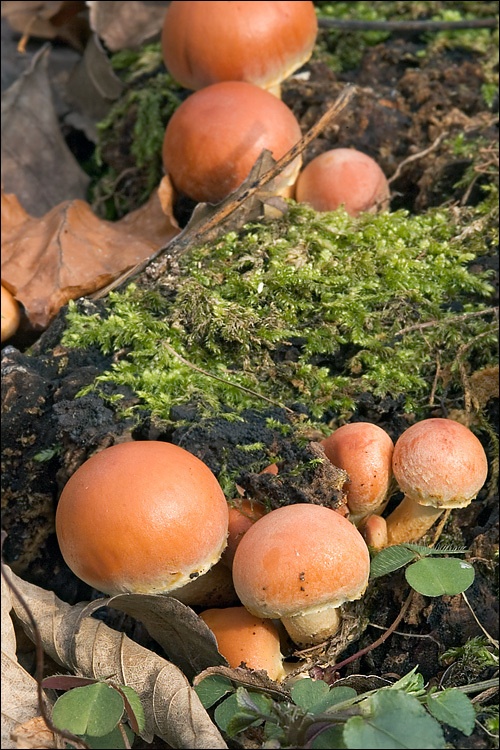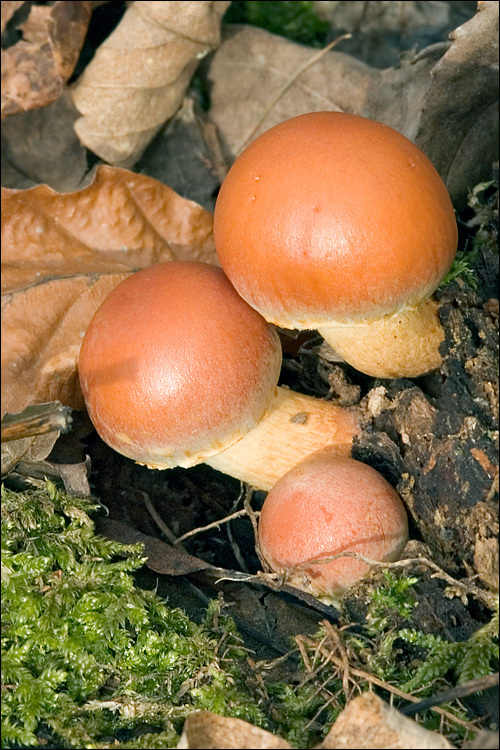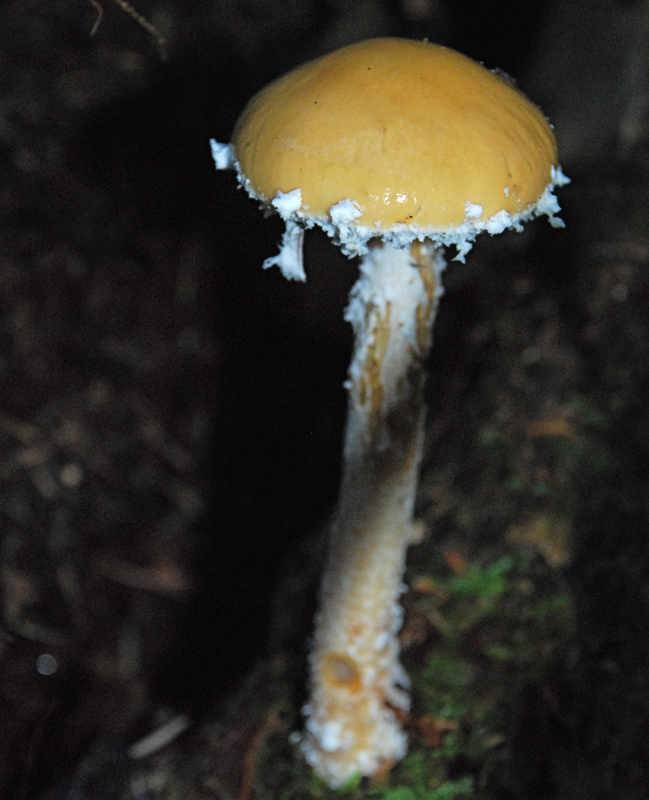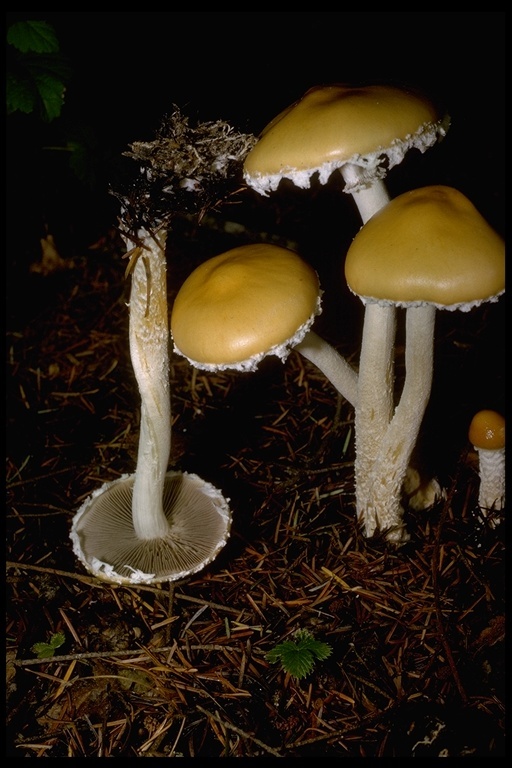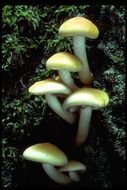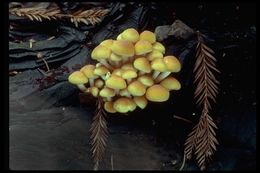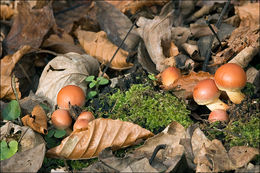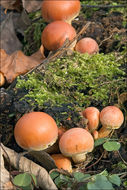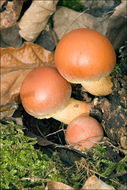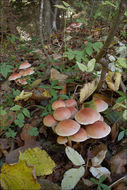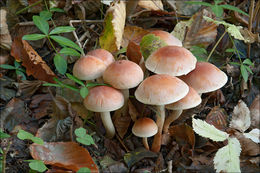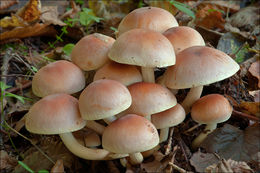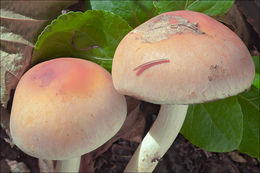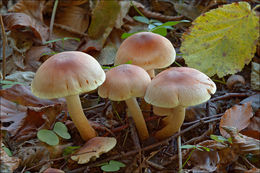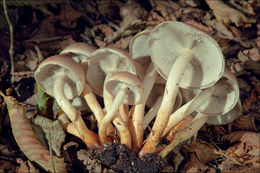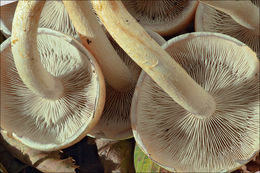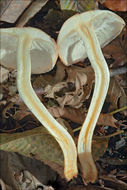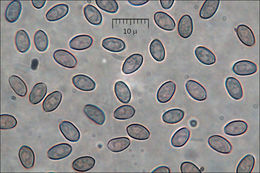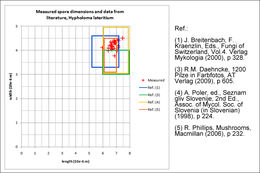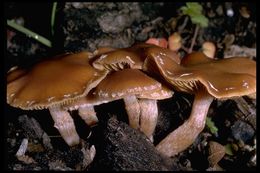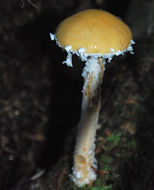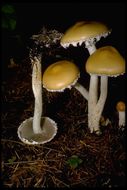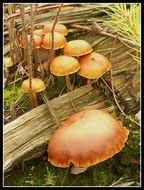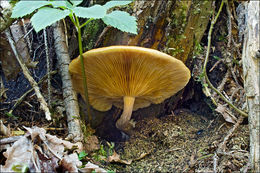-
2001 California Academy of Sciences
CalPhotos
-
2000 California Academy of Sciences
CalPhotos
-
2000 California Academy of Sciences
CalPhotos
-
2001 California Academy of Sciences
CalPhotos
-
Slo.: rjavordeca zveplenjaca - Syn. Hypholoma sublateritium - Habitat: Mixed woods, in shade, precipitations ~3.000 mm/year, average temperature 8-10 deg C, altitude 520 m (1.700 feet), alpine phytogeographical region. Substratum: rotten stump of deciduous tree, probably Quercus sp.. Acknowledgement: Thanks to Irene Andersson for determination.
-
Slo.: rjavordeca zveplenjaca - Syn. Hypholoma sublateritium - Habitat: Mixed woods, in shade, precipitations ~3.000 mm/year, average temperature 8-10 deg C, altitude 520 m (1.700 feet), alpine phytogeographical region. Substratum: rotten stump of deciduous tree, probably Quercus sp.. Acknowledgement: Thanks to Irene Andersson for determination.
-
Slo.: rjavordeca zveplenjaca - Syn. Hypholoma sublateritium - Habitat: Mixed woods, in shade, precipitations ~3.000 mm/year, average temperature 8-10 deg C, altitude 520 m (1.700 feet), alpine phytogeographical region. Substratum: rotten stump of deciduous tree, probably Quercus sp.. Acknowledgement: Thanks to Irene Andersson for determination.
-
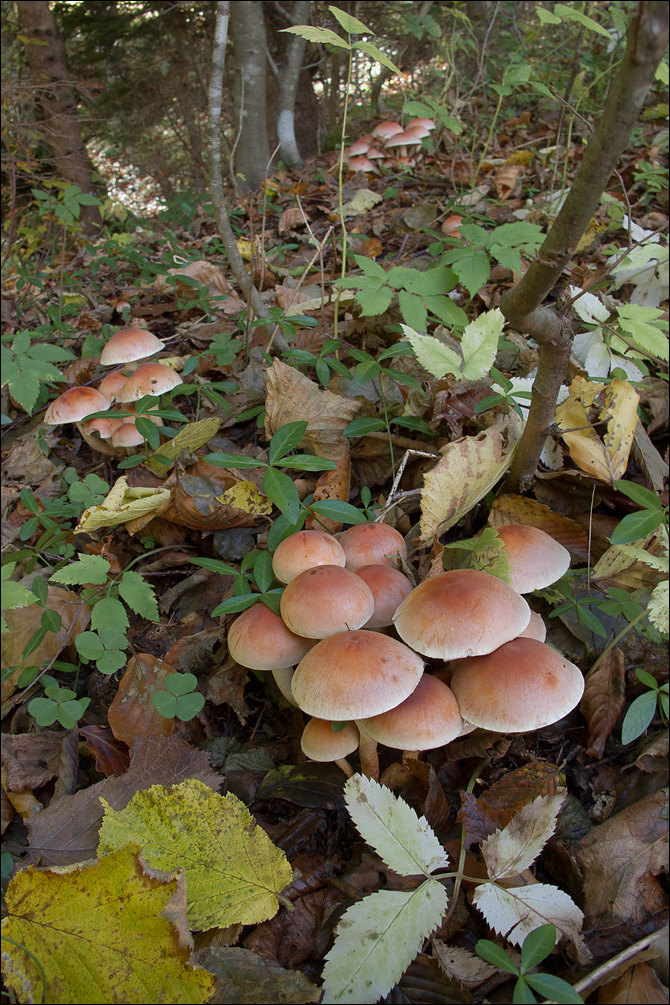
Slo.: rjavordea veplenjaa, openatordea veplenjaa - syn. Hypholoma sublateritium (Fr.) Quelet, Psilocybe lateritia (Schff.: Fr.) Noord. - Habitat: overgrown former pasture, now thickets of low trees and bushes, Picea abies, Acer sp., Corylus avellana, Fagus sylvatica dominant; moderately inclined mountain slope, northeast aspect; calcareous ground, close to a small water stream; in shade, partly protected from direct rain by tree canopies, average precipitations ~ 3.000 mm/year, average temperature 6-8 deg C, elevation 640 m (2.100 feet), alpine phytogeographical region. Substratum: apparently on ground, actually on buried rotten wood or roots of an unknown kind. Pilei shown on picture 25 growing probably on Picea abies. Comments: This very common but also very beautiful mushrooms were growing in five groups from a few to many fruit bodies; pileus diameter up to 6 cm, stem up to 10 cm long and 7-8 mm in diameter; taste unpleasant, somewhat biter; smell indistinctive, mushroomy or on dust or soil, SP surprisingly abundant, purple-brown with a violet tint, oac525. Spores smooth. Dimensions: 6,2 [6,7 ; 6,9] 7,3 x 3,9 [4,2 ; 4,3] 4,5 microns; Q = 1,5 [1,6] 1,8; N = 30; C = 95%; Me = 6,8 x 4,2 microns; Qe = 1,6. Olympus CH20, NEA 100x/1.25, magnification 1.000 x, oil, in water. AmScope MA500 digital camera. Herbarium: Mycotheca and lichen herbarium (LJU-Li) of Slovenian Forestry Institute, Vena pot 2, Ljubljana, Index Herbariorum LJF Ref.: (1) J. Breitenbach, F. Kraenzlin, Eds., Fungi of Switzerland, Vol.4. Verlag Mykologia (2000), p 328. (2) G.J. Krieglsteiner (Hrsg.), Die Grosspilze Baden-Wrttembergs, Band 4., Ulmer (2003), p 358. (3) R.M. Daehncke, 1200 Pilze in Farbfotos, AT Verlag (2009), p 605. (4) A. Poler, ed., Seznam gliv Slovenije, 2nd Ed., Assoc. of Mycol. Soc. of Slovenia (in Slovenian) (1998), p 224. (5) R. Phillips, Mushrooms, Macmillan (2006), p 232.
-
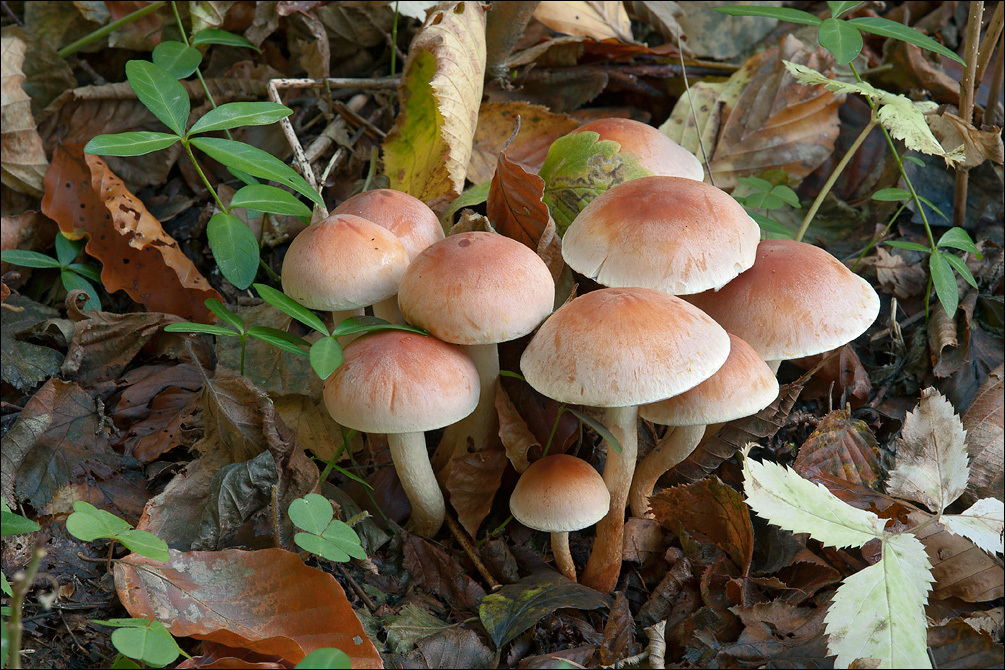
Slo.: rjavordea veplenjaa, openatordea veplenjaa - syn. Hypholoma sublateritium (Fr.) Quelet, Psilocybe lateritia (Schff.: Fr.) Noord. - Habitat: overgrown former pasture, now thickets of low trees and bushes, Picea abies, Acer sp., Corylus avellana, Fagus sylvatica dominant; moderately inclined mountain slope, northeast aspect; calcareous ground, close to a small water stream; in shade, partly protected from direct rain by tree canopies, average precipitations ~ 3.000 mm/year, average temperature 6-8 deg C, elevation 640 m (2.100 feet), alpine phytogeographical region. Substratum: apparently on ground, actually on buried rotten wood or roots of an unknown kind. Pilei shown on picture 25 growing probably on Picea abies. Comments: This very common but also very beautiful mushrooms were growing in five groups from a few to many fruit bodies; pileus diameter up to 6 cm, stem up to 10 cm long and 7-8 mm in diameter; taste unpleasant, somewhat biter; smell indistinctive, mushroomy or on dust or soil, SP surprisingly abundant, purple-brown with a violet tint, oac525. Spores smooth. Dimensions: 6,2 [6,7 ; 6,9] 7,3 x 3,9 [4,2 ; 4,3] 4,5 microns; Q = 1,5 [1,6] 1,8; N = 30; C = 95%; Me = 6,8 x 4,2 microns; Qe = 1,6. Olympus CH20, NEA 100x/1.25, magnification 1.000 x, oil, in water. AmScope MA500 digital camera. Herbarium: Mycotheca and lichen herbarium (LJU-Li) of Slovenian Forestry Institute, Vena pot 2, Ljubljana, Index Herbariorum LJF Ref.: (1) J. Breitenbach, F. Kraenzlin, Eds., Fungi of Switzerland, Vol.4. Verlag Mykologia (2000), p 328. (2) G.J. Krieglsteiner (Hrsg.), Die Grosspilze Baden-Wrttembergs, Band 4., Ulmer (2003), p 358. (3) R.M. Daehncke, 1200 Pilze in Farbfotos, AT Verlag (2009), p 605. (4) A. Poler, ed., Seznam gliv Slovenije, 2nd Ed., Assoc. of Mycol. Soc. of Slovenia (in Slovenian) (1998), p 224. (5) R. Phillips, Mushrooms, Macmillan (2006), p 232.
-
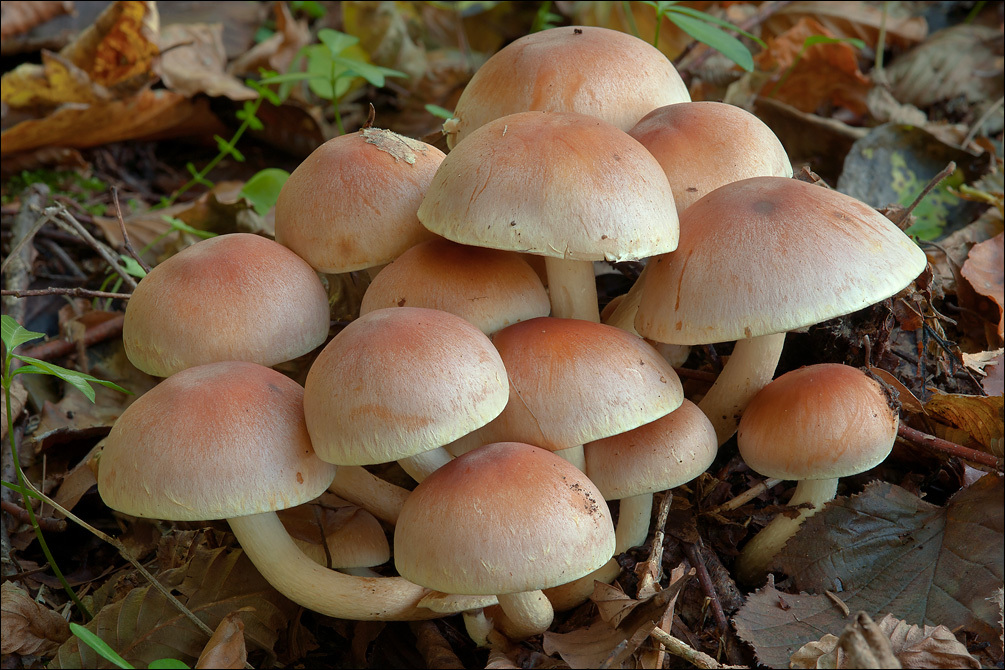
Slo.: rjavordea veplenjaa, openatordea veplenjaa - syn. Hypholoma sublateritium (Fr.) Quelet, Psilocybe lateritia (Schff.: Fr.) Noord. - Habitat: overgrown former pasture, now thickets of low trees and bushes, Picea abies, Acer sp., Corylus avellana, Fagus sylvatica dominant; moderately inclined mountain slope, northeast aspect; calcareous ground, close to a small water stream; in shade, partly protected from direct rain by tree canopies, average precipitations ~ 3.000 mm/year, average temperature 6-8 deg C, elevation 640 m (2.100 feet), alpine phytogeographical region. Substratum: apparently on ground, actually on buried rotten wood or roots of an unknown kind. Pilei shown on picture 25 growing probably on Picea abies. Comments: This very common but also very beautiful mushrooms were growing in five groups from a few to many fruit bodies; pileus diameter up to 6 cm, stem up to 10 cm long and 7-8 mm in diameter; taste unpleasant, somewhat biter; smell indistinctive, mushroomy or on dust or soil, SP surprisingly abundant, purple-brown with a violet tint, oac525. Spores smooth. Dimensions: 6,2 [6,7 ; 6,9] 7,3 x 3,9 [4,2 ; 4,3] 4,5 microns; Q = 1,5 [1,6] 1,8; N = 30; C = 95%; Me = 6,8 x 4,2 microns; Qe = 1,6. Olympus CH20, NEA 100x/1.25, magnification 1.000 x, oil, in water. AmScope MA500 digital camera. Herbarium: Mycotheca and lichen herbarium (LJU-Li) of Slovenian Forestry Institute, Vena pot 2, Ljubljana, Index Herbariorum LJF Ref.: (1) J. Breitenbach, F. Kraenzlin, Eds., Fungi of Switzerland, Vol.4. Verlag Mykologia (2000), p 328. (2) G.J. Krieglsteiner (Hrsg.), Die Grosspilze Baden-Wrttembergs, Band 4., Ulmer (2003), p 358. (3) R.M. Daehncke, 1200 Pilze in Farbfotos, AT Verlag (2009), p 605. (4) A. Poler, ed., Seznam gliv Slovenije, 2nd Ed., Assoc. of Mycol. Soc. of Slovenia (in Slovenian) (1998), p 224. (5) R. Phillips, Mushrooms, Macmillan (2006), p 232.
-
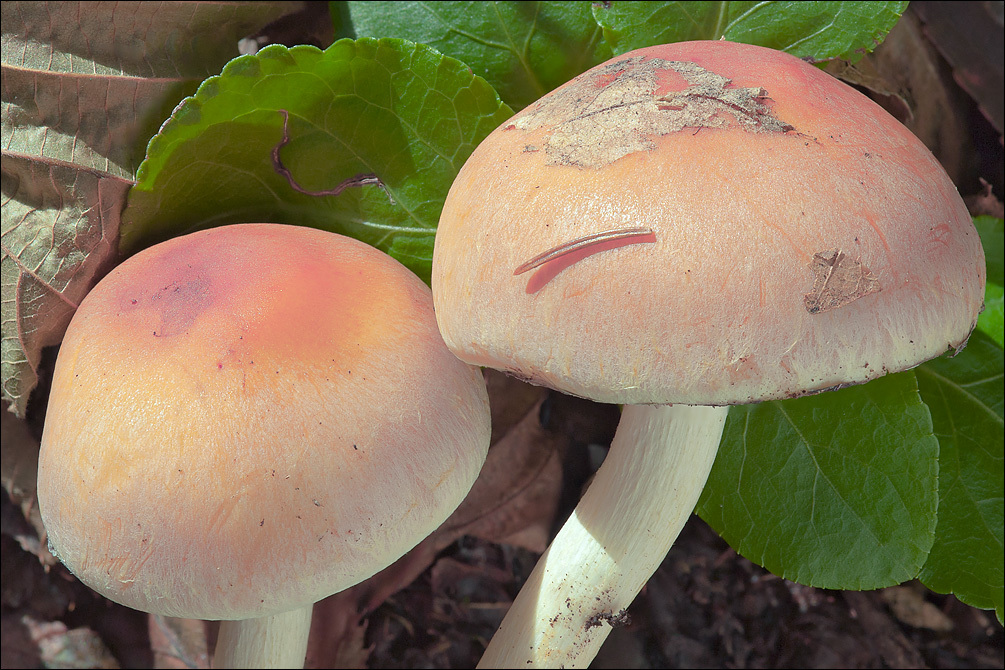
Slo.: rjavordea veplenjaa, openatordea veplenjaa - syn. Hypholoma sublateritium (Fr.) Quelet, Psilocybe lateritia (Schff.: Fr.) Noord. - Habitat: overgrown former pasture, now thickets of low trees and bushes, Picea abies, Acer sp., Corylus avellana, Fagus sylvatica dominant; moderately inclined mountain slope, northeast aspect; calcareous ground, close to a small water stream; in shade, partly protected from direct rain by tree canopies, average precipitations ~ 3.000 mm/year, average temperature 6-8 deg C, elevation 640 m (2.100 feet), alpine phytogeographical region. Substratum: apparently on ground, actually on buried rotten wood or roots of an unknown kind. Pilei shown on picture 25 growing probably on Picea abies. Comments: This very common but also very beautiful mushrooms were growing in five groups from a few to many fruit bodies; pileus diameter up to 6 cm, stem up to 10 cm long and 7-8 mm in diameter; taste unpleasant, somewhat biter; smell indistinctive, mushroomy or on dust or soil, SP surprisingly abundant, purple-brown with a violet tint, oac525. Spores smooth. Dimensions: 6,2 [6,7 ; 6,9] 7,3 x 3,9 [4,2 ; 4,3] 4,5 microns; Q = 1,5 [1,6] 1,8; N = 30; C = 95%; Me = 6,8 x 4,2 microns; Qe = 1,6. Olympus CH20, NEA 100x/1.25, magnification 1.000 x, oil, in water. AmScope MA500 digital camera. Herbarium: Mycotheca and lichen herbarium (LJU-Li) of Slovenian Forestry Institute, Vena pot 2, Ljubljana, Index Herbariorum LJF Ref.: (1) J. Breitenbach, F. Kraenzlin, Eds., Fungi of Switzerland, Vol.4. Verlag Mykologia (2000), p 328. (2) G.J. Krieglsteiner (Hrsg.), Die Grosspilze Baden-Wrttembergs, Band 4., Ulmer (2003), p 358. (3) R.M. Daehncke, 1200 Pilze in Farbfotos, AT Verlag (2009), p 605. (4) A. Poler, ed., Seznam gliv Slovenije, 2nd Ed., Assoc. of Mycol. Soc. of Slovenia (in Slovenian) (1998), p 224. (5) R. Phillips, Mushrooms, Macmillan (2006), p 232.
-

Slo.: rjavordea veplenjaa, openatordea veplenjaa - syn. Hypholoma sublateritium (Fr.) Quelet, Psilocybe lateritia (Schff.: Fr.) Noord. - Habitat: overgrown former pasture, now thickets of low trees and bushes, Picea abies, Acer sp., Corylus avellana, Fagus sylvatica dominant; moderately inclined mountain slope, northeast aspect; calcareous ground, close to a small water stream; in shade, partly protected from direct rain by tree canopies, average precipitations ~ 3.000 mm/year, average temperature 6-8 deg C, elevation 640 m (2.100 feet), alpine phytogeographical region. Substratum: apparently on ground, actually on buried rotten wood or roots of an unknown kind. Pilei shown on picture 25 growing probably on Picea abies. Comments: This very common but also very beautiful mushrooms were growing in five groups from a few to many fruit bodies; pileus diameter up to 6 cm, stem up to 10 cm long and 7-8 mm in diameter; taste unpleasant, somewhat biter; smell indistinctive, mushroomy or on dust or soil, SP surprisingly abundant, purple-brown with a violet tint, oac525. Spores smooth. Dimensions: 6,2 [6,7 ; 6,9] 7,3 x 3,9 [4,2 ; 4,3] 4,5 microns; Q = 1,5 [1,6] 1,8; N = 30; C = 95%; Me = 6,8 x 4,2 microns; Qe = 1,6. Olympus CH20, NEA 100x/1.25, magnification 1.000 x, oil, in water. AmScope MA500 digital camera. Herbarium: Mycotheca and lichen herbarium (LJU-Li) of Slovenian Forestry Institute, Vena pot 2, Ljubljana, Index Herbariorum LJF Ref.: (1) J. Breitenbach, F. Kraenzlin, Eds., Fungi of Switzerland, Vol.4. Verlag Mykologia (2000), p 328. (2) G.J. Krieglsteiner (Hrsg.), Die Grosspilze Baden-Wrttembergs, Band 4., Ulmer (2003), p 358. (3) R.M. Daehncke, 1200 Pilze in Farbfotos, AT Verlag (2009), p 605. (4) A. Poler, ed., Seznam gliv Slovenije, 2nd Ed., Assoc. of Mycol. Soc. of Slovenia (in Slovenian) (1998), p 224. (5) R. Phillips, Mushrooms, Macmillan (2006), p 232.
-
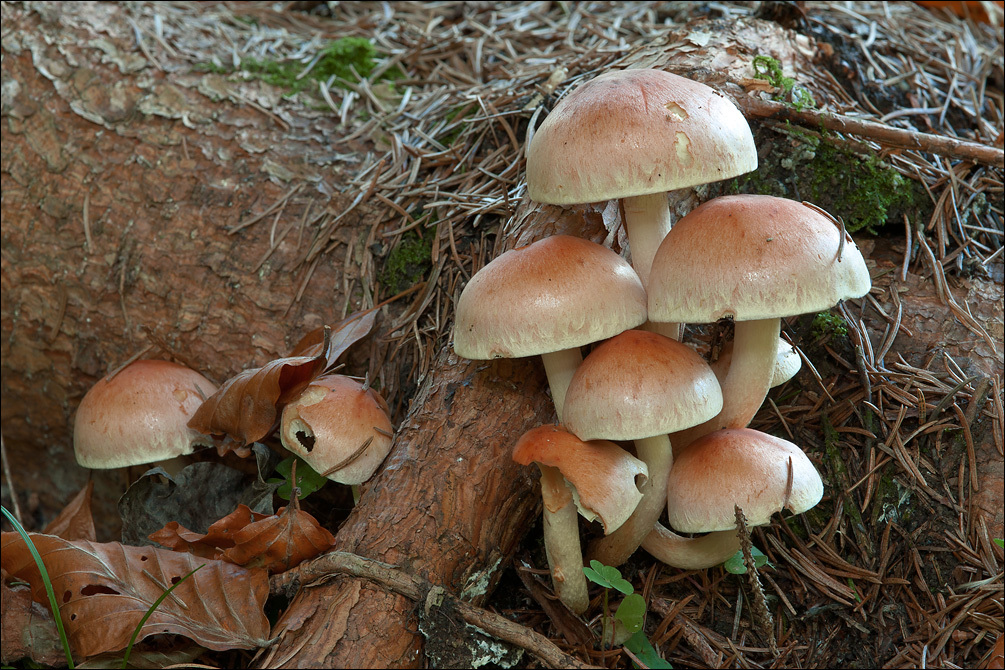
Slo.: rjavordea veplenjaa, openatordea veplenjaa - syn. Hypholoma sublateritium (Fr.) Quelet, Psilocybe lateritia (Schff.: Fr.) Noord. - Habitat: overgrown former pasture, now thickets of low trees and bushes, Picea abies, Acer sp., Corylus avellana, Fagus sylvatica dominant; moderately inclined mountain slope, northeast aspect; calcareous ground, close to a small water stream; in shade, partly protected from direct rain by tree canopies, average precipitations ~ 3.000 mm/year, average temperature 6-8 deg C, elevation 640 m (2.100 feet), alpine phytogeographical region. Substratum: apparently on ground, actually on buried rotten wood or roots of an unknown kind. Pilei shown on picture 25 growing probably on Picea abies. Comments: This very common but also very beautiful mushrooms were growing in five groups from a few to many fruit bodies; pileus diameter up to 6 cm, stem up to 10 cm long and 7-8 mm in diameter; taste unpleasant, somewhat biter; smell indistinctive, mushroomy or on dust or soil, SP surprisingly abundant, purple-brown with a violet tint, oac525. Spores smooth. Dimensions: 6,2 [6,7 ; 6,9] 7,3 x 3,9 [4,2 ; 4,3] 4,5 microns; Q = 1,5 [1,6] 1,8; N = 30; C = 95%; Me = 6,8 x 4,2 microns; Qe = 1,6. Olympus CH20, NEA 100x/1.25, magnification 1.000 x, oil, in water. AmScope MA500 digital camera. Herbarium: Mycotheca and lichen herbarium (LJU-Li) of Slovenian Forestry Institute, Vena pot 2, Ljubljana, Index Herbariorum LJF Ref.: (1) J. Breitenbach, F. Kraenzlin, Eds., Fungi of Switzerland, Vol.4. Verlag Mykologia (2000), p 328. (2) G.J. Krieglsteiner (Hrsg.), Die Grosspilze Baden-Wrttembergs, Band 4., Ulmer (2003), p 358. (3) R.M. Daehncke, 1200 Pilze in Farbfotos, AT Verlag (2009), p 605. (4) A. Poler, ed., Seznam gliv Slovenije, 2nd Ed., Assoc. of Mycol. Soc. of Slovenia (in Slovenian) (1998), p 224. (5) R. Phillips, Mushrooms, Macmillan (2006), p 232.
-
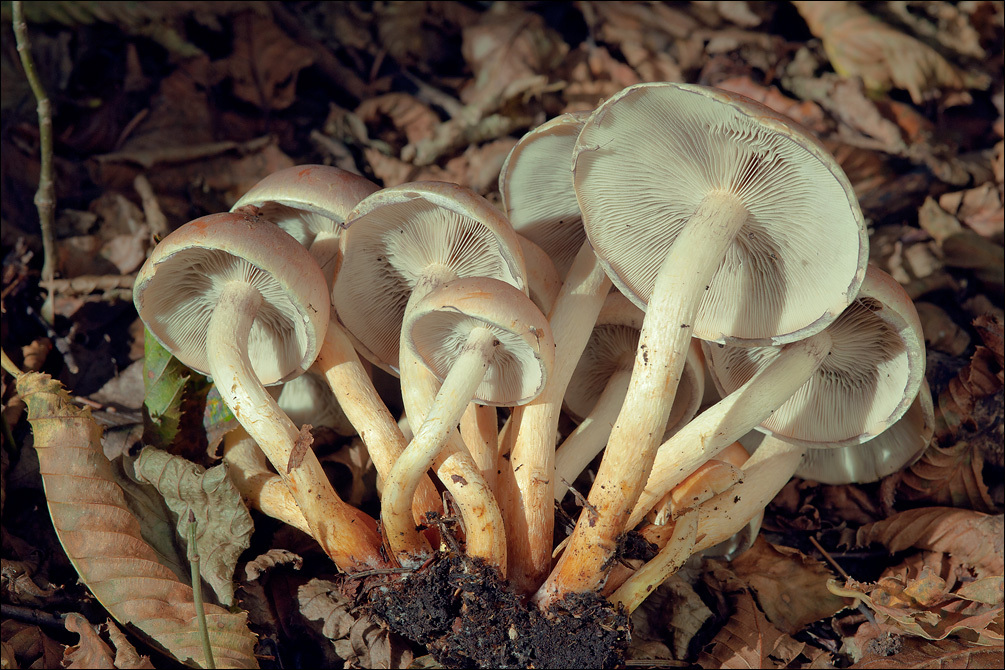
Slo.: rjavordea veplenjaa, openatordea veplenjaa - syn. Hypholoma sublateritium (Fr.) Quelet, Psilocybe lateritia (Schff.: Fr.) Noord. - Habitat: overgrown former pasture, now thickets of low trees and bushes, Picea abies, Acer sp., Corylus avellana, Fagus sylvatica dominant; moderately inclined mountain slope, northeast aspect; calcareous ground, close to a small water stream; in shade, partly protected from direct rain by tree canopies, average precipitations ~ 3.000 mm/year, average temperature 6-8 deg C, elevation 640 m (2.100 feet), alpine phytogeographical region. Substratum: apparently on ground, actually on buried rotten wood or roots of an unknown kind. Pilei shown on picture 25 growing probably on Picea abies. Comments: This very common but also very beautiful mushrooms were growing in five groups from a few to many fruit bodies; pileus diameter up to 6 cm, stem up to 10 cm long and 7-8 mm in diameter; taste unpleasant, somewhat biter; smell indistinctive, mushroomy or on dust or soil, SP surprisingly abundant, purple-brown with a violet tint, oac525. Spores smooth. Dimensions: 6,2 [6,7 ; 6,9] 7,3 x 3,9 [4,2 ; 4,3] 4,5 microns; Q = 1,5 [1,6] 1,8; N = 30; C = 95%; Me = 6,8 x 4,2 microns; Qe = 1,6. Olympus CH20, NEA 100x/1.25, magnification 1.000 x, oil, in water. AmScope MA500 digital camera. Herbarium: Mycotheca and lichen herbarium (LJU-Li) of Slovenian Forestry Institute, Vena pot 2, Ljubljana, Index Herbariorum LJF Ref.: (1) J. Breitenbach, F. Kraenzlin, Eds., Fungi of Switzerland, Vol.4. Verlag Mykologia (2000), p 328. (2) G.J. Krieglsteiner (Hrsg.), Die Grosspilze Baden-Wrttembergs, Band 4., Ulmer (2003), p 358. (3) R.M. Daehncke, 1200 Pilze in Farbfotos, AT Verlag (2009), p 605. (4) A. Poler, ed., Seznam gliv Slovenije, 2nd Ed., Assoc. of Mycol. Soc. of Slovenia (in Slovenian) (1998), p 224. (5) R. Phillips, Mushrooms, Macmillan (2006), p 232.
-
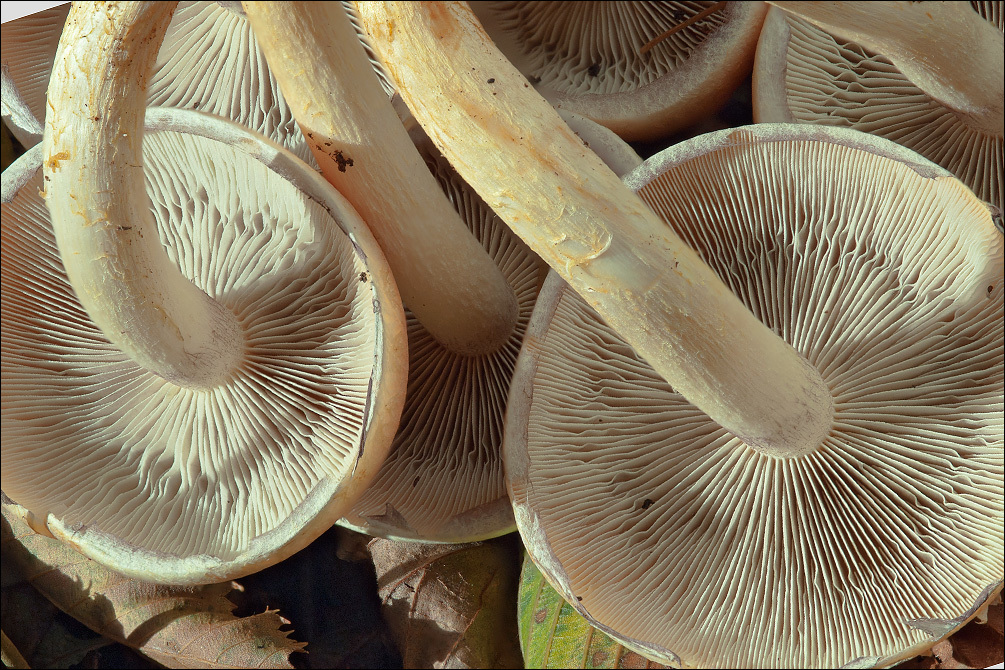
Slo.: rjavordea veplenjaa, openatordea veplenjaa - syn. Hypholoma sublateritium (Fr.) Quelet, Psilocybe lateritia (Schff.: Fr.) Noord. - Habitat: overgrown former pasture, now thickets of low trees and bushes, Picea abies, Acer sp., Corylus avellana, Fagus sylvatica dominant; moderately inclined mountain slope, northeast aspect; calcareous ground, close to a small water stream; in shade, partly protected from direct rain by tree canopies, average precipitations ~ 3.000 mm/year, average temperature 6-8 deg C, elevation 640 m (2.100 feet), alpine phytogeographical region. Substratum: apparently on ground, actually on buried rotten wood or roots of an unknown kind. Pilei shown on picture 25 growing probably on Picea abies. Comments: This very common but also very beautiful mushrooms were growing in five groups from a few to many fruit bodies; pileus diameter up to 6 cm, stem up to 10 cm long and 7-8 mm in diameter; taste unpleasant, somewhat biter; smell indistinctive, mushroomy or on dust or soil, SP surprisingly abundant, purple-brown with a violet tint, oac525. Spores smooth. Dimensions: 6,2 [6,7 ; 6,9] 7,3 x 3,9 [4,2 ; 4,3] 4,5 microns; Q = 1,5 [1,6] 1,8; N = 30; C = 95%; Me = 6,8 x 4,2 microns; Qe = 1,6. Olympus CH20, NEA 100x/1.25, magnification 1.000 x, oil, in water. AmScope MA500 digital camera. Herbarium: Mycotheca and lichen herbarium (LJU-Li) of Slovenian Forestry Institute, Vena pot 2, Ljubljana, Index Herbariorum LJF Ref.: (1) J. Breitenbach, F. Kraenzlin, Eds., Fungi of Switzerland, Vol.4. Verlag Mykologia (2000), p 328. (2) G.J. Krieglsteiner (Hrsg.), Die Grosspilze Baden-Wrttembergs, Band 4., Ulmer (2003), p 358. (3) R.M. Daehncke, 1200 Pilze in Farbfotos, AT Verlag (2009), p 605. (4) A. Poler, ed., Seznam gliv Slovenije, 2nd Ed., Assoc. of Mycol. Soc. of Slovenia (in Slovenian) (1998), p 224. (5) R. Phillips, Mushrooms, Macmillan (2006), p 232.
-

Slo.: rjavordea veplenjaa, openatordea veplenjaa - syn. Hypholoma sublateritium (Fr.) Quelet, Psilocybe lateritia (Schff.: Fr.) Noord. - Habitat: overgrown former pasture, now thickets of low trees and bushes, Picea abies, Acer sp., Corylus avellana, Fagus sylvatica dominant; moderately inclined mountain slope, northeast aspect; calcareous ground, close to a small water stream; in shade, partly protected from direct rain by tree canopies, average precipitations ~ 3.000 mm/year, average temperature 6-8 deg C, elevation 640 m (2.100 feet), alpine phytogeographical region. Substratum: apparently on ground, actually on buried rotten wood or roots of an unknown kind. Pilei shown on picture 25 growing probably on Picea abies. Comments: This very common but also very beautiful mushrooms were growing in five groups from a few to many fruit bodies; pileus diameter up to 6 cm, stem up to 10 cm long and 7-8 mm in diameter; taste unpleasant, somewhat biter; smell indistinctive, mushroomy or on dust or soil, SP surprisingly abundant, purple-brown with a violet tint, oac525. Spores smooth. Dimensions: 6,2 [6,7 ; 6,9] 7,3 x 3,9 [4,2 ; 4,3] 4,5 microns; Q = 1,5 [1,6] 1,8; N = 30; C = 95%; Me = 6,8 x 4,2 microns; Qe = 1,6. Olympus CH20, NEA 100x/1.25, magnification 1.000 x, oil, in water. AmScope MA500 digital camera. Herbarium: Mycotheca and lichen herbarium (LJU-Li) of Slovenian Forestry Institute, Vena pot 2, Ljubljana, Index Herbariorum LJF Ref.: (1) J. Breitenbach, F. Kraenzlin, Eds., Fungi of Switzerland, Vol.4. Verlag Mykologia (2000), p 328. (2) G.J. Krieglsteiner (Hrsg.), Die Grosspilze Baden-Wrttembergs, Band 4., Ulmer (2003), p 358. (3) R.M. Daehncke, 1200 Pilze in Farbfotos, AT Verlag (2009), p 605. (4) A. Poler, ed., Seznam gliv Slovenije, 2nd Ed., Assoc. of Mycol. Soc. of Slovenia (in Slovenian) (1998), p 224. (5) R. Phillips, Mushrooms, Macmillan (2006), p 232.
-
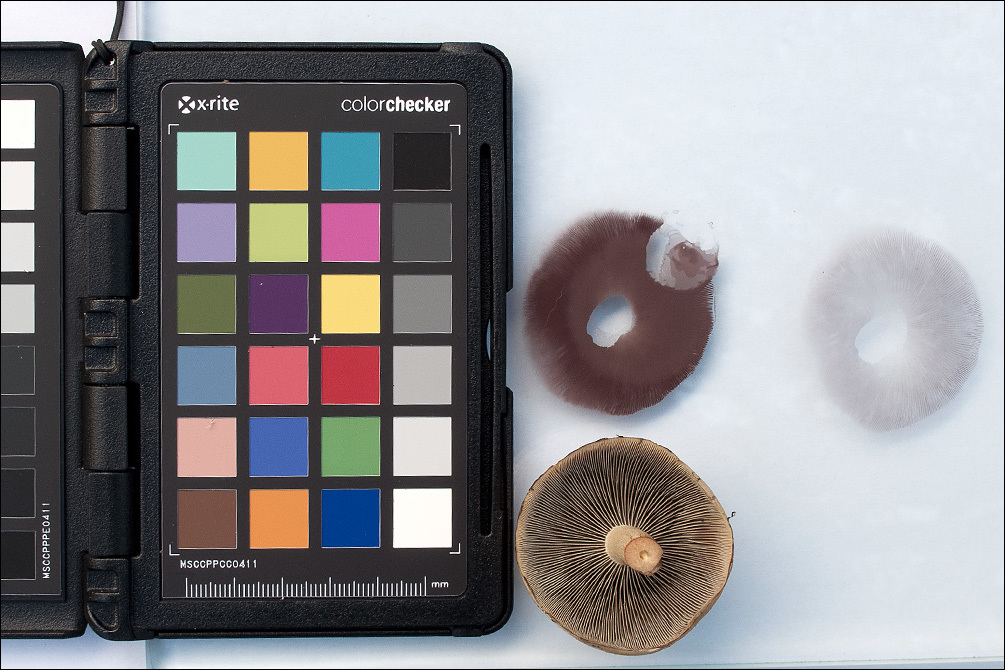
Slo.: rjavordea veplenjaa, openatordea veplenjaa - syn. Hypholoma sublateritium (Fr.) Quelet, Psilocybe lateritia (Schff.: Fr.) Noord. - Habitat: overgrown former pasture, now thickets of low trees and bushes, Picea abies, Acer sp., Corylus avellana, Fagus sylvatica dominant; moderately inclined mountain slope, northeast aspect; calcareous ground, close to a small water stream; in shade, partly protected from direct rain by tree canopies, average precipitations ~ 3.000 mm/year, average temperature 6-8 deg C, elevation 640 m (2.100 feet), alpine phytogeographical region. Substratum: apparently on ground, actually on buried rotten wood or roots of an unknown kind. Pilei shown on picture 25 growing probably on Picea abies. Comments: This very common but also very beautiful mushrooms were growing in five groups from a few to many fruit bodies; pileus diameter up to 6 cm, stem up to 10 cm long and 7-8 mm in diameter; taste unpleasant, somewhat biter; smell indistinctive, mushroomy or on dust or soil, SP surprisingly abundant, purple-brown with a violet tint, oac525. Spores smooth. Dimensions: 6,2 [6,7 ; 6,9] 7,3 x 3,9 [4,2 ; 4,3] 4,5 microns; Q = 1,5 [1,6] 1,8; N = 30; C = 95%; Me = 6,8 x 4,2 microns; Qe = 1,6. Olympus CH20, NEA 100x/1.25, magnification 1.000 x, oil, in water. AmScope MA500 digital camera. Herbarium: Mycotheca and lichen herbarium (LJU-Li) of Slovenian Forestry Institute, Vena pot 2, Ljubljana, Index Herbariorum LJF Ref.: (1) J. Breitenbach, F. Kraenzlin, Eds., Fungi of Switzerland, Vol.4. Verlag Mykologia (2000), p 328. (2) G.J. Krieglsteiner (Hrsg.), Die Grosspilze Baden-Wrttembergs, Band 4., Ulmer (2003), p 358. (3) R.M. Daehncke, 1200 Pilze in Farbfotos, AT Verlag (2009), p 605. (4) A. Poler, ed., Seznam gliv Slovenije, 2nd Ed., Assoc. of Mycol. Soc. of Slovenia (in Slovenian) (1998), p 224. (5) R. Phillips, Mushrooms, Macmillan (2006), p 232.
-
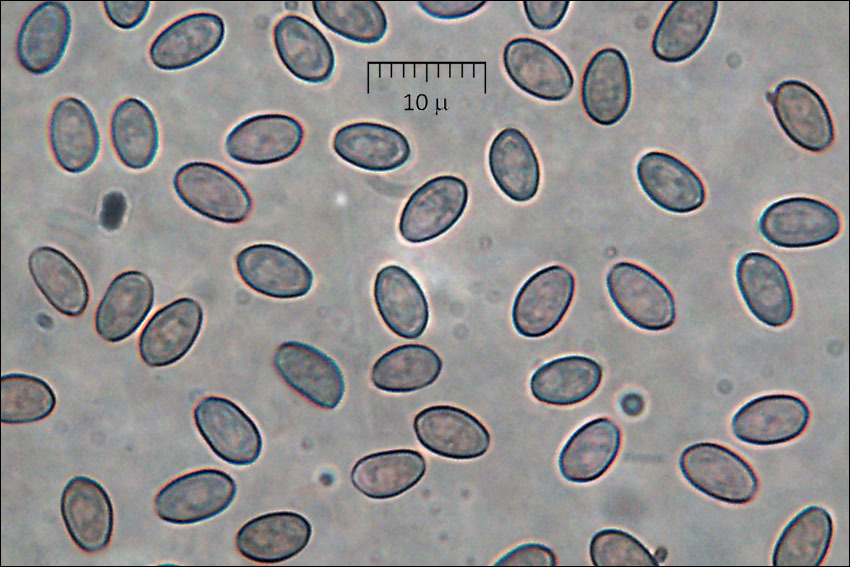
Slo.: rjavordea veplenjaa, openatordea veplenjaa - syn. Hypholoma sublateritium (Fr.) Quelet, Psilocybe lateritia (Schff.: Fr.) Noord. - Habitat: overgrown former pasture, now thickets of low trees and bushes, Picea abies, Acer sp., Corylus avellana, Fagus sylvatica dominant; moderately inclined mountain slope, northeast aspect; calcareous ground, close to a small water stream; in shade, partly protected from direct rain by tree canopies, average precipitations ~ 3.000 mm/year, average temperature 6-8 deg C, elevation 640 m (2.100 feet), alpine phytogeographical region. Substratum: apparently on ground, actually on buried rotten wood or roots of an unknown kind. Pilei shown on picture 25 growing probably on Picea abies. Comments: This very common but also very beautiful mushrooms were growing in five groups from a few to many fruit bodies; pileus diameter up to 6 cm, stem up to 10 cm long and 7-8 mm in diameter; taste unpleasant, somewhat biter; smell indistinctive, mushroomy or on dust or soil, SP surprisingly abundant, purple-brown with a violet tint, oac525. Spores smooth. Dimensions: 6,2 [6,7 ; 6,9] 7,3 x 3,9 [4,2 ; 4,3] 4,5 microns; Q = 1,5 [1,6] 1,8; N = 30; C = 95%; Me = 6,8 x 4,2 microns; Qe = 1,6. Olympus CH20, NEA 100x/1.25, magnification 1.000 x, oil, in water. AmScope MA500 digital camera. Herbarium: Mycotheca and lichen herbarium (LJU-Li) of Slovenian Forestry Institute, Vena pot 2, Ljubljana, Index Herbariorum LJF Ref.: (1) J. Breitenbach, F. Kraenzlin, Eds., Fungi of Switzerland, Vol.4. Verlag Mykologia (2000), p 328. (2) G.J. Krieglsteiner (Hrsg.), Die Grosspilze Baden-Wrttembergs, Band 4., Ulmer (2003), p 358. (3) R.M. Daehncke, 1200 Pilze in Farbfotos, AT Verlag (2009), p 605. (4) A. Poler, ed., Seznam gliv Slovenije, 2nd Ed., Assoc. of Mycol. Soc. of Slovenia (in Slovenian) (1998), p 224. (5) R. Phillips, Mushrooms, Macmillan (2006), p 232.
-
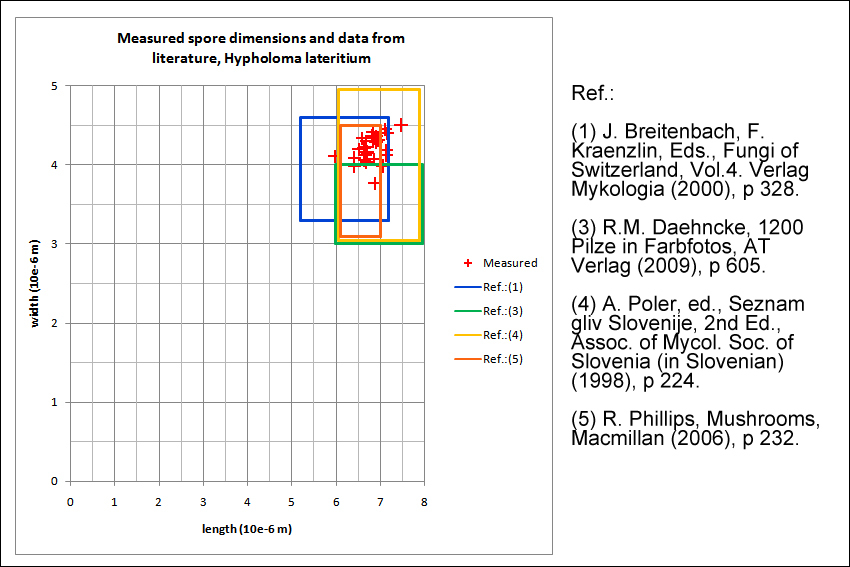
Slo.: rjavordea veplenjaa, openatordea veplenjaa - syn. Hypholoma sublateritium (Fr.) Quelet, Psilocybe lateritia (Schff.: Fr.) Noord. - Habitat: overgrown former pasture, now thickets of low trees and bushes, Picea abies, Acer sp., Corylus avellana, Fagus sylvatica dominant; moderately inclined mountain slope, northeast aspect; calcareous ground, close to a small water stream; in shade, partly protected from direct rain by tree canopies, average precipitations ~ 3.000 mm/year, average temperature 6-8 deg C, elevation 640 m (2.100 feet), alpine phytogeographical region. Substratum: apparently on ground, actually on buried rotten wood or roots of an unknown kind. Pilei shown on picture 25 growing probably on Picea abies. Comments: This very common but also very beautiful mushrooms were growing in five groups from a few to many fruit bodies; pileus diameter up to 6 cm, stem up to 10 cm long and 7-8 mm in diameter; taste unpleasant, somewhat biter; smell indistinctive, mushroomy or on dust or soil, SP surprisingly abundant, purple-brown with a violet tint, oac525. Spores smooth. Dimensions: 6,2 [6,7 ; 6,9] 7,3 x 3,9 [4,2 ; 4,3] 4,5 microns; Q = 1,5 [1,6] 1,8; N = 30; C = 95%; Me = 6,8 x 4,2 microns; Qe = 1,6. Olympus CH20, NEA 100x/1.25, magnification 1.000 x, oil, in water. AmScope MA500 digital camera. Herbarium: Mycotheca and lichen herbarium (LJU-Li) of Slovenian Forestry Institute, Vena pot 2, Ljubljana, Index Herbariorum LJF Ref.: (1) J. Breitenbach, F. Kraenzlin, Eds., Fungi of Switzerland, Vol.4. Verlag Mykologia (2000), p 328. (2) G.J. Krieglsteiner (Hrsg.), Die Grosspilze Baden-Wrttembergs, Band 4., Ulmer (2003), p 358. (3) R.M. Daehncke, 1200 Pilze in Farbfotos, AT Verlag (2009), p 605. (4) A. Poler, ed., Seznam gliv Slovenije, 2nd Ed., Assoc. of Mycol. Soc. of Slovenia (in Slovenian) (1998), p 224. (5) R. Phillips, Mushrooms, Macmillan (2006), p 232.
-
2001 California Academy of Sciences
CalPhotos
-
-
2001 California Academy of Sciences
CalPhotos
-
-
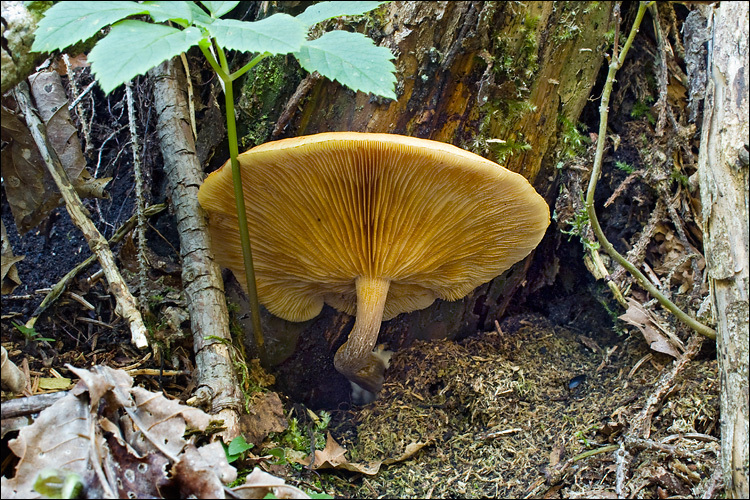
Slo.: predirna plamenka - syn. Agaricus penetrans - Habitat: Opens pace, a southeast oriented bank of alluvial river deposits, calcareous ground, sunny place, humid air conditions, exposed to direct rain, average precipitations ~ 3.000 mm/year, average temperature 8-10 deg C, elevations 400 m (1.300 feet), alpine phytogeographical region. - Substratum: a stump and dead rotten branches of Sambucus nigra on ground. - Habitat: Opens pace, a southeast oriented bank of alluvial river deposits, calcareous ground, sunny place, humid air conditions, exposed to direct rain, average precipitations ~ 3.000 mm/year, average temperature 8-10 deg C, elevations 400 m (1.300 feet), alpine phytogeographical region. - Substratum: a stump and dead rotten branches of Sambucus nigra on ground. - Comments: No squamules observed on pileus and smaller than 10 microns diameter of peleipellis hyphae (? - I am not sure I see the right thing) rule out G. sapineus. Growing solitary and in small groups, several fruit bodies present; pileus diameter 3-5(7) cm; taste bitter; smell faint and mild; SP deep dark orange. Spores not smooth. Dimensions: 7,7 (SD = 0,4) x 4,4 ( SD = 0,2) micr., Q = 1,71 (SD = 0,09), n = 30. Motic B2-211A, magnification 1.000 x, oil, in water. - Ref.: (1) Personal communication with Mr. Anton Poler and Mr. Bojan Rot, www.gobenabovskem.si . (2) W. Rothmaler, Exkursionsflora von Deutschland, Vol.1, Niedere Pflanzen, Elsevier, 3.Auflage, (1994), p 429. (3) http://www.mushroomexpert.com/gymnopilus_sapineus.html . (4) J.Breitenbach, F.Kraenzlin, Eds., Fungi of Switzerland, Vol.2. Verlag Mykologia (1984), p 138. (5) M.Bon, Parey's Buch der Pilze, Kosmos (2005), p 244. (6) R.M. Daehncke, 1200 Pilze in Farbfotos, AT Verlag (2009), p 703.




